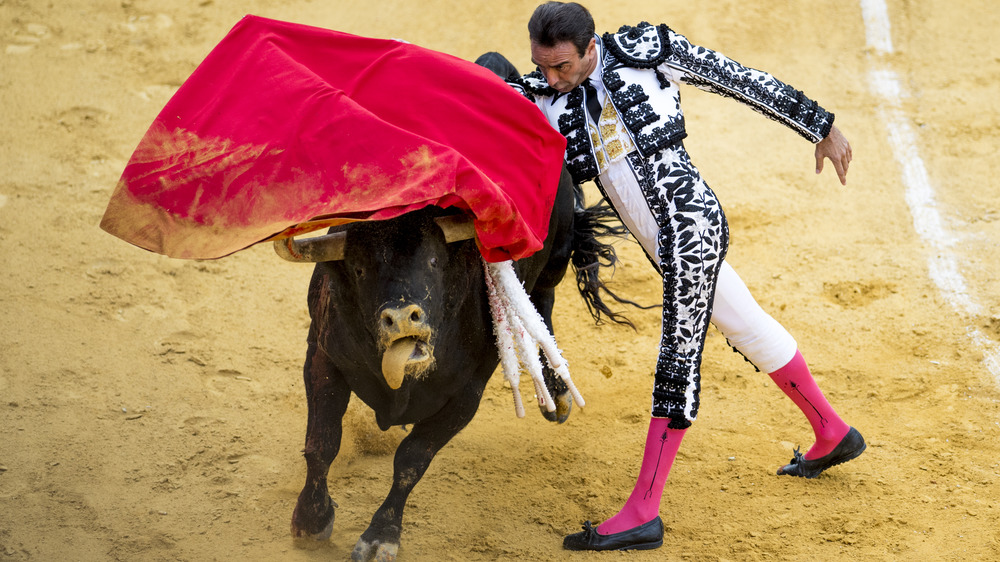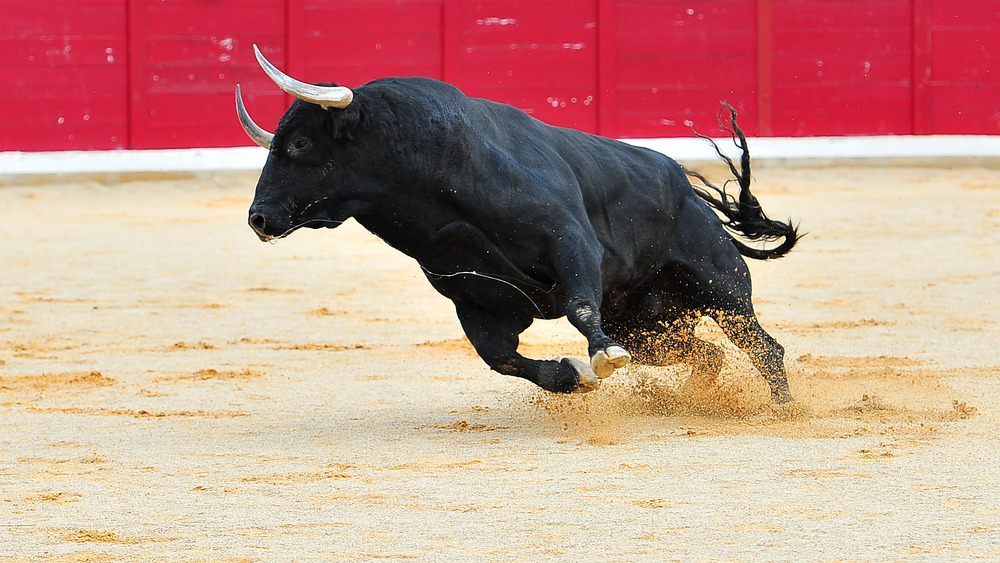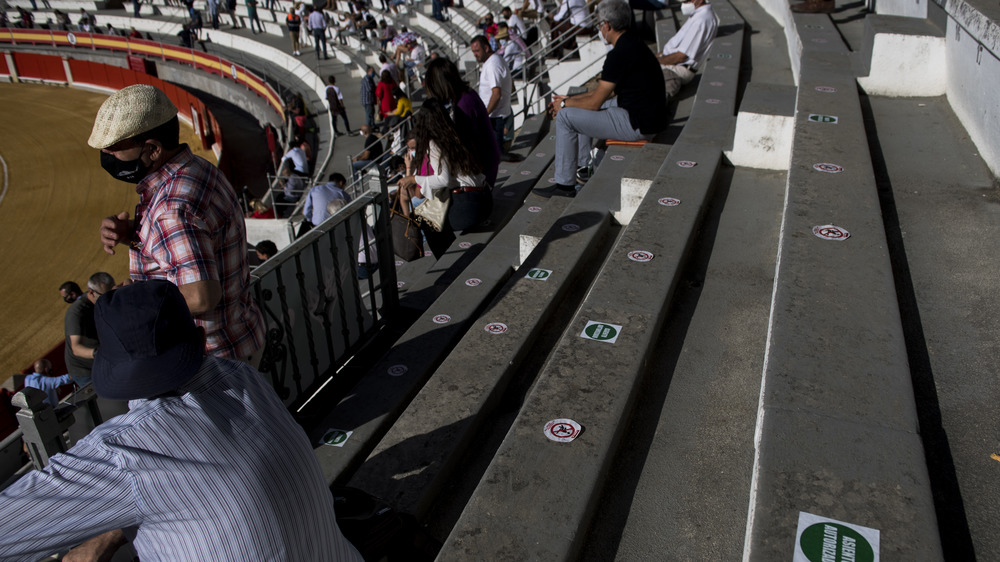What Really Happens At A Bullfight?
Watching a bullfight isn't like viewing any other sporting event. "Like a play, bullfighting is all about the characters," explained the BBC. The matador, or bullfighter, isn't the only main event here. Britannica describes the 20-minute show as "a tragedy in three acts," also called tercios. "In actuality," the website explained, "there are six separate and required phases to a bullfight: the opening cape work, the lancing by the picadors, the flashy and graceful passes with the large cape, the placing of the banderillas, the dangerous passes with the muleta, and finally the kill."
After the processional, the banderilleros play with the bull, one antagonizing it with a cape and dodging its horns by hiding behind a wall or burladero while another distracts the animal, getting the bull to move across the ring. The matador will watch the proceedings and assess the animal and its fighting style, using the material garnered later in the match.
After a bit, the picadors enter the arena — called the Plaza de Toros — on horseback dressed in elegant costumes. One will poke it with a colorfully decorated spear (vara), trying to lance its neck muscle. This allows a clean kill by the matador since the bull's head will hang much lower afterward.
The bull almost always loses
Next, come the matadors, who twirl their capes — also known as a muleta — and face the bullish foes with bravado, manipulating the animals around the ring on foot as the audience cheers.
The finale features man versus bull, until the creature is killed by a matador — at least that's what happens in Spain where the bullfighter slices into the bull's hide between its shoulders, so the sword can hit the heart.
Then the animal's carcass is dragged from the ring, usually by mules or horses. Later, the bull goes to a butcher to process its meat with some restaurants, like Madrid's Casa Toribio, specializing in carne de toro de lidia, or meat from a bull killed in a fight, reported NPR.
Periodically, a bull fights back so brilliantly that rather than killing the spirited animal, it is pardoned and gets to retire in a grassy pasture, per Live Science. Unfortunately, this isn't the norm.
Will bullfighting's popularity decline?
In Portugal, though, bullfighting is slightly different from Spain's version. In this country, the opening act includes the cavaleiros, who like the picador, stab the bull from horseback with a dart or bandarilha. Other featured players include the bandarilheiros, who help distract the bull throughout the match, and forcardas — a group of eight without weapons — that follow the matador's performance.
The matador in Portugal merely dallies with the animal and does not kill the bull in front of the crowd. The forcardas keep the audience excited as they allow the bull to charge at them, often with the fierce animal pushing one or more to the ground. Eventually, the bull is pulled from the ring and the spectacle ends. Matadors have not killed bulls in the arena since the mid-19th century, according to Atlas Lisboa.
Bullfighting as an entertainment vehicle started during Roman times as a way to celebrate special weddings and military victories. The Moors continued holding the events, and "bullfighting developed into a ritualistic occasion observed in connection with feast days, on which the conquering Moors, mounted on highly trained horses, confronted and killed the bulls," according to Spanish Fiestas.
Bullfighting remains a popular activity today, according to Forbes, although many are "increasingly divided over the tragic end of the show." The attendance rate declines each year, and the magazine reported that there was a recent increase "of voices calling for regulations against animal cruelty." Still, the sport has its fans with some 1,500 fights a year, according to The World.


